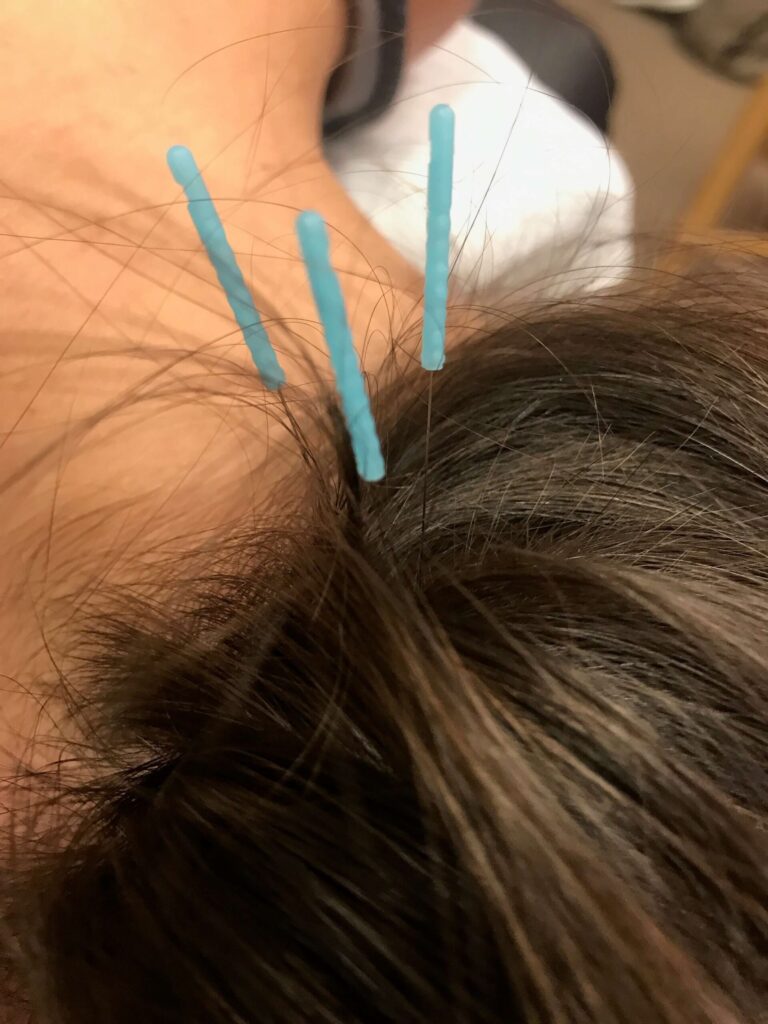Is dry needling therapy right for you?

Part I: Dry Needling Therapy
Dry Needling is a therapeutic technique in which a small filament needle is used to mechanically disrupt dysfunctional muscle, fascia and connective tissue. The most supported approach targets myofascial active and / or latent trigger points. Active trigger points can cause spontaneous pain, whereas latent trigger points elicit symptoms when compressed. A trigger point can be anywhere in the body in response to sudden injury, muscle overload, or repetitive microtrauma. These trigger points negatively alter the activity of the muscle causing scarring, myofascial pain, motor recruitment and muscle firing deficits.
The actual mechanism of effect of dry needling therapy (DNT) is being vigorously researched, and we are learning more as scientific methods improve in this exploding field.
A brief introduction to pain science: there is hypersensitivity, or the increase in the excitability of the nervous system so that normal inputs produce abnormal responses. This “ramped up” system can then create a trigger point complex, or a taut band with a focused knot or hyperirritable spots that cause local or even referred symptoms.
Often there is inflammation around a site of tissue damage altering pain sensitivity with increases in responsiveness. To further complicate matters, autonomic phenomena contributing to a motor dysfunction with referred pain and tenderness…you may have heard of the sympathetic (fight – or -flight) and parasympathetic systems. The consequence is local and/or referred pain, muscle weakness, muscle tension preventing full lengthening of the muscle, restricted mobility and diminished joint stability. Mechanically, dry needling targets the microscopic dysfunction of the muscle along with the nerves associated with it. The disruption produced by the needle also releases chemical and hormonal messengers that help balance the nervous system. Overall, the goal of DNT is to return the muscle and soft tissue structures to normal electrical, chemical, and mechanical environment.
There is emerging literature* to support the recommendation of DNT for decreasing pain and dysfunction in the following areas:
- Headaches (frontal, temporal, migraine)
- Neck pain after motor vehicle accident
- Temporomandibular disorder (TMJ)
- Upper Quadrant: i.e.: neck / shoulder pain as an overhead athlete, or work -related with less than optimal posture at desk
- Chronic Low back painAcute Low back pain
- Lower Extremity i.e.: hamstring strain, patellofemoral pain syndrome
*Please note, there is variety in the quality and quantity of evidence to support each injury. Many clinicians, including myself, are already using dry needling to treat a plethora of disorders not listed above and there is abundant research that will be released in the near future to support the use of #DNT in a myriad of syndromes…SO STAY TUNED!

Part II: Frequently Asked Questions
Dry Needling Therapy will be specific to my practice and integration of trigger point dry needling therapy for patients with a physical therapy diagnosis that will reasonably improve with DNT. I will always get your consent; explain the plan, purpose and rationale to include DNT in your plan of care! I will always encourage open communication, and request you follow up with me after treatment. If you are my patient, you already have a program to follow up with stretching, and stabilization training. If you are not my patient, I will use MedBridge to create a home exercise program to facilitate muscle recovery, length, strength and stability. RESET, UNLOAD, RELOAD.
All in all, every patient and every injury is a unique case. Contact Stephanie at stephanie@thefitinstitutechicago.com for more information specific to your pain. Special shout out to Dr. Ken Cooper in Fort Worth, Texas for being an amazing mentor!
